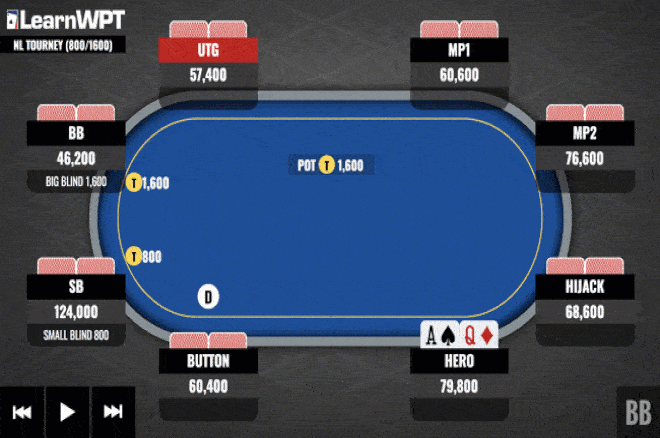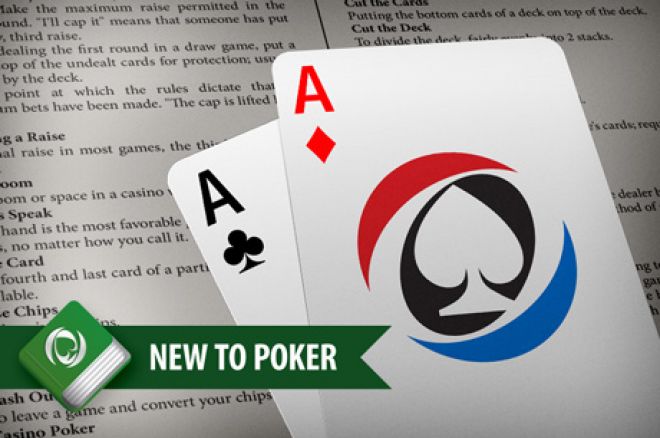Poker Check Call
There are different types of calls in poker parlance: Cold call - to call a raise without having already put any money in the pot. Flat or smooth call - to call bet when one would normally raise, in order to play the hand deceptively. This is a type of slow play. Other players must then decide whether to call, fold or raise. Call When someone starts the betting, you have to at least match their bet to stay in the hand. Raise When someone at the table bets.
If you’re new to the game of Poker you might be overwhelmed with the many different poker terms that you hear during the game. In order for a game to flow smoothly, players should be well versed with the basic Poker Action terms such as Check, Bet, Call, Raise and Fold. In this simple guide, we will explain each term and how it is used in the game of Poker.
If you find that you need to learn more about the different phases of the game of Poker such as the Flop, Turn and River, check out our Beginner’s Guide: How To Play Poker
Check
Check is used when a player would like stay in the game and keep their cards while passing the action over to the next player. Using this option gives players the opportunity to raise, call or fold later on to any action from another player during the same betting round.
Players usually use the universal sign of tapping the table with their hands to indicate that they would like the Check.
Bet
A player opens the round of betting in a poker hand by calling a “Bet”. The player who called the action to “Bet” may be doing so because they are immediately to the left of the dealer button allowing them first action, or because another player has checked and passed the action on to them. Subsequent players will then be faced with the option to call, raise, or fold.
Call
After a player has called a “Bet”, subsequent player can “Call” the bet. A “Call” is essentially just matching the existing wager from a “Bet” or a “Raise” in the current betting round. If no player decides to call, the hand is over and the player who made the “Bet” or “Raise” wins the hand. If in the case the hand makes it to the “River” and a “Bet” or “Raise” is called by either one or more than one player, all players who are still in the hand will show their hole cards and the best hand wins.To learn more about hand rankings, please check out our Guide to Poker Hand Rankings.

Raise
A player who would like to increase the wager of the opening bet has the option to call a “Raise”. A “Raise” has to be equal or more than the amount of the previous “Bet” or “Raise”. The action of raising is usually associated with having a strong hand but can also be used as a bluff to win the pot.

After a “Raise” has been placed, subsequent players will have the option of a “Call”, “Fold” or a “Re-Raise”. A “Re-Raise” is exactly what it sounds like. Players who would like to increase the existing wager from the “Raise” that has already been placed can choose to “Re-Raise”. Now this could go on and on until a player decides to just “Call” it or “Fold”.
Fold
A “Fold” is to discard your hole cards, essentially ending your participation in a hand. Players will no longer need to contribute to the pot once they have folded. When playing online poker, players can only “Fold” when it is their turn to act. The general rule of thumb applies in live poker games as well and players who wish to fold will need to wait for their turn before declaring their intention to “Fold” by tossing their hole cards face down towards the dealer who will then place the cards in the muck pile.
Now that you’re more familiar with the basic poker actions, you can play poker with more confidence. Whether you’re playing live poker or online poker, Texas Hold’em or Omaha, you’re equipped with the knowledge that will help you improve your poker game.
Related: Beginners Guide on How To Play Texas Hold’em
Related: How To Play Omaha

Related: Short Deck (6+) Rules Explained
This strategy column, and many like it, are featured in every issue of Card Player magazine. Subscribe today to get 26 issues delivered to your home each year!
While playing $20-$40 limit hold’em, you pick up the Q Q in middle position. You open-raise, the button three-bets, and you go to the flop heads up. The flop comes 10 7 3. You check, and, as expected, the button bets.
You figure that he has a pretty wide range here, including several pocket pairs, A-K, A-Q, and perhaps some occasional whimsical adventures. You decide to check-raise, for several reasons:
• You are way ahead of most of his range.
• You are out of position, which normally means that you have to take some chances to gain full value from your hand. If you just call here and check the turn, he will often just take a free card, and you will fail to profit when you are ahead. You want him to pay to draw out.
• Of course, you also may be behind, in which case you will most likely be three-bet, or raised on the turn. At that point, if it happens, you will have to assess your opponent and make a decision about whether to continue.
He calls your check-raise, and the turn is the 3. This seems to be as good a turn card as you could hope for, and you bet. He calls.
You probably are thinking, “No ace, no king, no ace, no king,” when the dealer burns and turns the A. Now what? If your opponent has a dreaded ace, you are going to lose. Your first thought is probably to check and call. But what if, instead of an ace, he has pocket jacks or even a loose hand like K-10 suited? He will probably check it back, and you will lose the chance to gain a bet from a crying call. You want to win those bets when they are available.
Check Call Poker Strategy
If you bet, however, he might raise. Then, you could lose two bets if you call, and kick yourself for not checking. Or, you could fold, in which case you lose if he was making a bluff-raise.
The right answer depends (surprise!) on how you assess your opponent. Against most opponents, who are reasonable, straightforward to bet, and if raised, fold. Very few opponents are capable of making a bluff-raise here. You already have shown considerable strength, the pot is fairly large, and he should be expecting a call. Plus, you bet fearlessly, which has to alarm him. After all, unless he has one, the ace should scare him as much as it does you.
However, some opponents are highly creative, and may be capable of making just such a bluff. Luckily, they are also the ones who will probably put in a bluff-bet if you check, hoping to convince you to fold. Against one of them, check and call. In the long run, you probably will pick off enough bluffs to offset the bets that you may lose by not betting when you have the best hand.
This choice — bet and fold to a raise, or check and call — comes up often when you are heads up and out of position on the river. You have a good hand, but the river card may have beaten you. You don’t want to give up the calls when you are ahead, but also don’t want to lose two bets when you got unlucky. Against average opponents, bet and fold to a raise. Against tough, tricky opponents, check and call.
Think through these two choices before you act. Avoid the other two: betting and calling the raise, or checking and folding. Remember, by checking, you are often inviting even some usually honest players to attempt a bit of larceny, or to somehow think their second-best hand is good, so you have to make that river call.
Another example: Later in the same game, you happily see red aces in early position before the flop. After one fold, you open-raise, and get four callers: a middle-position player, the button, and both blinds. The flop is 9 7 4. So far, so good. The blinds check, you bet, the middle-position player calls, and the button raises. Both blinds fold, you three-bet, and the other two players call.
The turn is the J. This makes a straight if either opponent started with 10-8, but you can’t worry about that. You bet, the middle position player folds, and the button calls.

The river is the disappointing 2. Was the button raising for a free card on the flop with a flush draw, or does he have a hand like 10-9 or even J-10, which flopped a gutshot with two overcards? If he has the flush and you bet, you will probably get raised. And, of course, you have pocket aces, and it is tough to lay them down. At least if you call, you can show them, and everyone can see how unlucky you were. Despite this pity factor, you should, of course, quietly fold to the raise.
All of this should not affect your primary choices. Against most players, bet, hoping to pick up a call from a smaller pair. Against tough, tricky players, check and call, hoping to pick off a bluff. Don’t forget that you would have made the same series of plays with the A K, so the flush card on the river can look as scary to your opponent as it does to you.
But what if you don’t know the players? First, you should always have some idea of how everyone plays, even if you just watched one round before posting to play. But worst case, it is always safe to check and call, even though you may have lost a bet if it goes check, check. I hope that this is an unusual default position, because betting is far more profitable against most players.
Conclusion: Bluff-raises on the river are very rare at almost every level of play, but calling river raises is quite common. After all, the pot usually is large, it costs only one bet to call, and limit poker doesn’t reward heroic river lay-downs. Nevertheless, you ought to be able to assess your opposition well enough to understand who is capable of making huge, expensive, and generally unsuccessful bluff-raises, and who is not. Play accordingly, and you will collect all the bets you are entitled to, while not losing extra ones.
Barry Tanenbaum is the author of Advanced Limit Hold’em Strategy, and collaborator on Limit Hold’em: Winning Short-Handed Strategies. Barry offers private lessons tailored to the individual student. Please see his website, www.barrytanenbaum.com, or write to him at pokerbear@cox.net.